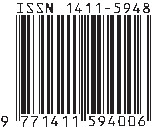STRUKTUR CERITA RAKYAT JAWA TENGAH BALAI-BALAI KAYU JATI: KAJIAN ANTROPOLOGI SASTRA
Abstract
Folklore is a story passed down from generation to generation that has been passed down from generation to generation orally to be preserved. Folklore contains aspects relating to attitudes, behavior and cultural values of society. Literary anthropology studies discuss literary works by emphasizing cultural values. This research aims to explain the structure and content of the story of Balai-Balai Kayu Jati and reveal the cultural reflection of Central Javanese society (especially the Tlogosari community). Balai-Balai Kayu Jati are analyzed from two perspectives, namely as works of fiction and as physical evidence of culture. As a work of fiction, a study is carried out on the structural elements of the story, while as physical evidence of culture, it is analyzed using a literary anthropology approach. The research results show that structurally, the story of Balai-Balai Kayu Jati is composed of characters, themes, settings and story points of view. Meanwhile, by using a literary anthropology approach, we can understand the cultural side of the people of Tlogosari, Central Java, namely the aspects of knowledge, technology, social society and art.
References
Djirong, S. 2014. “Kajian Antropologi Sastra Cerita Rakyat Datumuseng dan Maipa Deapati”. Sawerigading, 20(2):215—226.
Hasina, F.R., & Ummu, F.R.L. 2016. “Struktur Cerita Rakyat Bugis Cenrana Aju Maddra Tau (Pendekatan Antropologi Sastra)”. Salingka, Majalah Ilmiah Bahasa dan Sastra, 13(1):64—66.
Hidayat, H., Wimbrayardi, W., & Putra, A. 2019. “Seni Tradisi dan Kreativitas dalam Kebudayaan Minangkabau”. Jurnal Petunjuk dan Pendidikan Musik, 1(2):65—73.
Kistanto, N.H. 2015. “Tentang Konsep Kebudayaan”. Sabda: Jurnal Kajian Budaya, 10(2).
Maulidiah, N., & Saddhono, K. 2019. “Wujud Budaya dan Nilai Pendidikan dalam Cerita Rakyat Putri Jelumpang: Sebuah Kajian Antropologi Sastra”. Widyaparwa, 47(2): 185—192.
Mukhtar, R.H. 2021. “Nilai Budaya Sunda dalam Novel Jawara: Angkara di Bumi Krakatau Karya Fatih Zam.” Semiotika, 22 (2):96—108. https://doi.org/10.19184/semiotika.v22i2.24657.
Rahmat, L.I. 2019. “Kajian Antropologi Sastra dalam Cerita Rakyat Kabupaten Banyuwangi pada masyarakat Using”. Kredo: Jurnal Ilmiah Bahasa dan Sastra, 3(1):83—93.
Ratna, N.K. 2005. Sastra dan Cultural Studies Reprentasi Fiksi dan Fakta. Yogyakarta: Pustaka Pelajar.
Ratna, N.K. 2006. Teori, Metode, dan Teknik Penelitian Sastra: dari Strukturalisme hingga Postrukturalisme Perspektif Wacana Naratif. Yogyakarta: Pustaka Pelajar.
Sehandi, Y. 2014. Mengenal 25 Teori Sastra. Yogyakarta: Ombak.
Sumarto, S. 2018. “Budaya, Pemahaman dan Penerapannya: Aspek Sistem Religi, Bahasa, Pengetahuan, Sosial, Keseninan dan Teknologi”. Jurnal Literasiologi, 1(2):16—16.
Wardiah, D. 2017. “Unsur-Unsur Kebudayaan dalam novel Hanya Sebutir Debu Karya Sandi Firly”. Jurnal Dosen Universitas PGRI Palembang.

This work is licensed under a Creative Commons Attribution-ShareAlike 4.0 International License.
SEMIOTIKA has CC-BY-SA or an equivalent license as the optimal license for the publication, distribution, use, and reuse of scholarly work. Authors who publish with this journal retain copyright and grant the journal right of first publication with the work simultaneously licensed under a Creative Commons Attribution-ShareAlike 4.0 International License that allows others to share the work with an acknowledgment of the work's authorship and initial publication in this journal.
Attribution-ShareAlike
CC BY-SA










